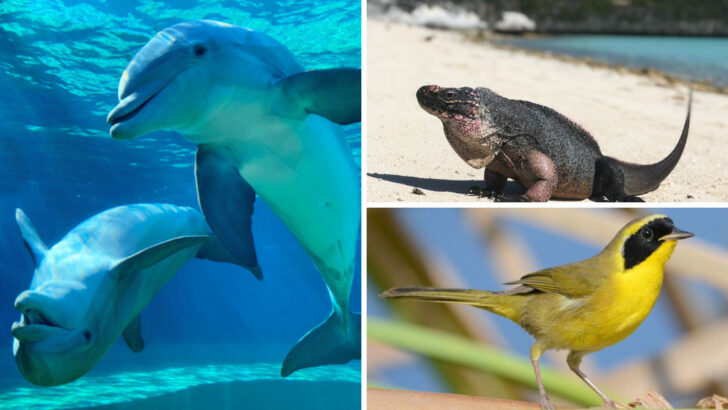The Bahamas is known for its stunning beaches and crystal-clear waters, but did you know it’s also home to some incredible wildlife? From the deep-blue ocean to its lush, vibrant islands, the Bahamas offers a diverse range of animals you won’t find anywhere else. Whether you’re diving in the sea or exploring the islands, you’re in for a treat as you discover some of nature’s most fascinating creatures.
From playful dolphins to exotic sea turtles, and even elusive sharks, the waters around the Bahamas are teeming with life. Beyond the beach, the islands themselves are home to unique animals that make this paradise even more special. So, if you’re a nature lover or an animal enthusiast, these 27 amazing creatures are just waiting to be discovered in one of the most beautiful places on earth.
Atlantic Bottlenose Dolphin
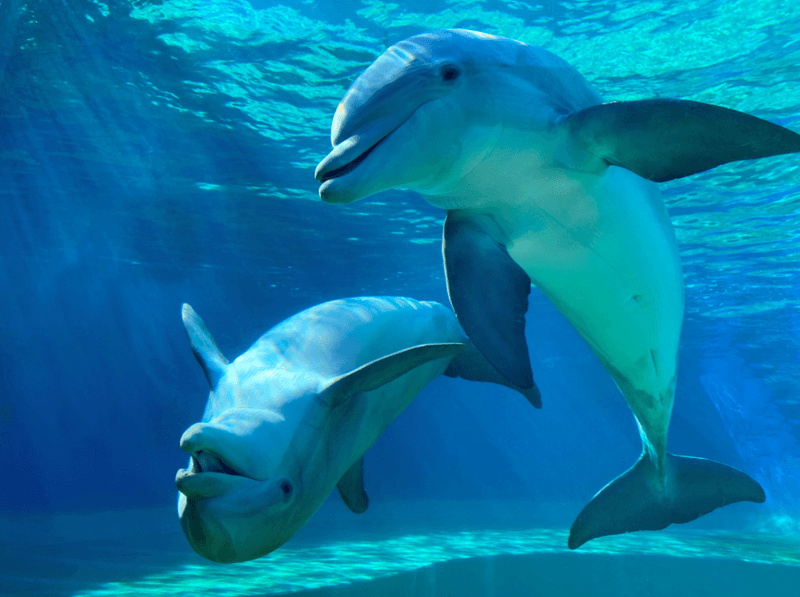
Atlantic Bottlenose Dolphins are one of the most intelligent marine mammals, known for their playful behavior. In the Bahamas, these dolphins are often seen leaping through the waves, delighting tourists with their acrobatics. They live in social groups or pods, which can range from a few individuals to over a dozen.
These dolphins communicate using a complex system of clicks and whistles. Observing them in their natural habitat is a thrilling experience. The warm, shallow waters of the Bahamas provide an ideal environment for these fascinating creatures, making them a highlight for wildlife enthusiasts.
West Indian Flamingo
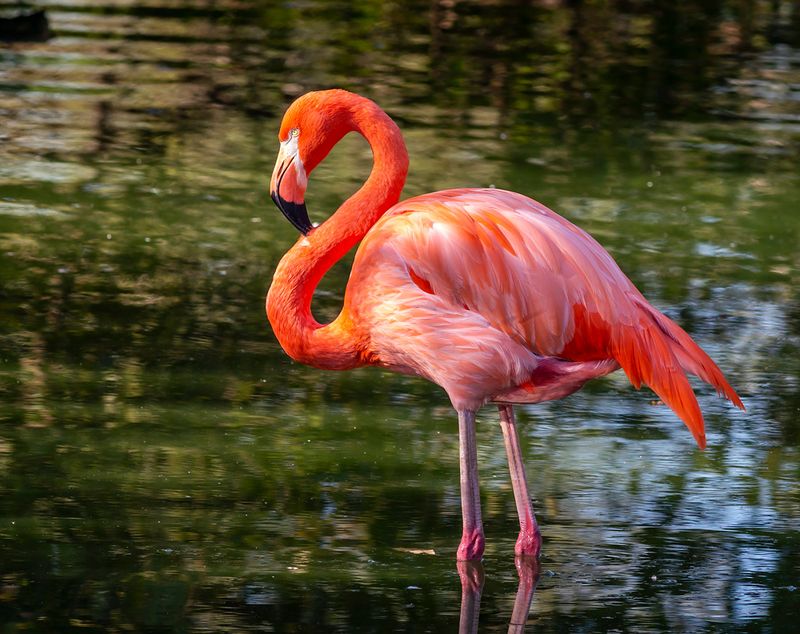
The West Indian Flamingo, also known as the Caribbean Flamingo, is famous for its striking pink color and elegant posture. Found in the wetlands and lagoons of the Bahamas, these birds are truly a sight to behold. Their vivid hue comes from the carotenoid pigments in their diet.
These social birds often gather in large flocks, creating a spectacular visual display. With their long legs and necks, they wade through the waters, feeding on small crustaceans and algae. The sight of flamingos in their natural habitat is unforgettable and a must-see in the Bahamas.
Loggerhead Sea Turtle
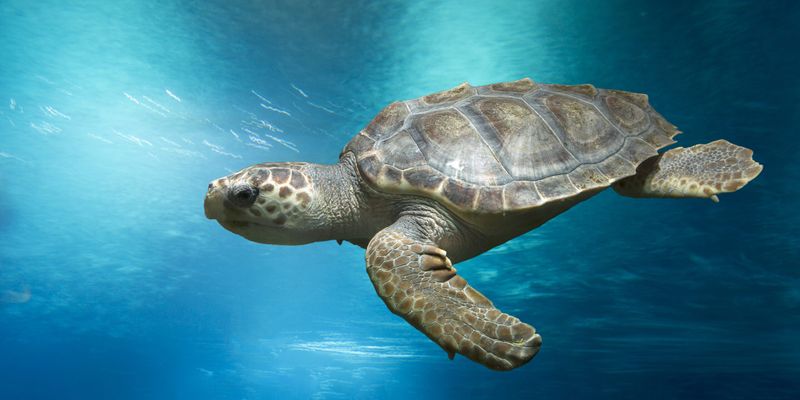
Loggerhead Sea Turtles are majestic creatures found in the warm waters of the Bahamas. Recognizable by their large heads and reddish-brown shells, these turtles are an important part of the marine ecosystem. They are often found near coral reefs, where they feed on jellyfish and crustaceans.
During nesting season, female turtles return to the beaches where they were born to lay their eggs. This incredible journey is a testament to their resilience and navigational skills. Protecting their nesting sites is crucial for their survival, as they face numerous threats from human activity and predators.
Nassau Grouper
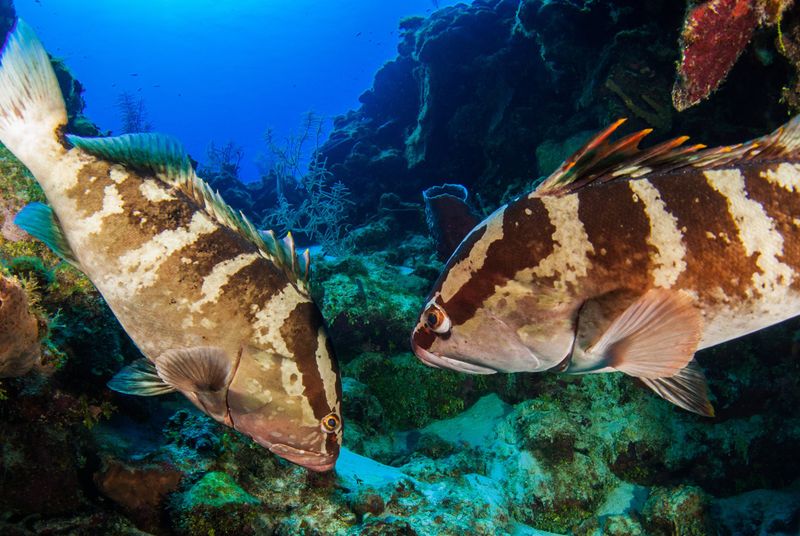
The Nassau Grouper is a vibrant fish species native to the coral reefs of the Bahamas. Known for their striking patterns and coloration, these groupers play a significant role in maintaining the health of the reefs. They are predators, feeding on smaller fish and invertebrates.
During spawning season, Nassau Groupers gather in large numbers, a spectacle that divers are keen to witness. Conservation efforts are vital to protect this species, as overfishing has led to declining populations. The Nassau Grouper is a cherished icon of the Bahamas’ marine biodiversity.
Bahamas Rock Iguana
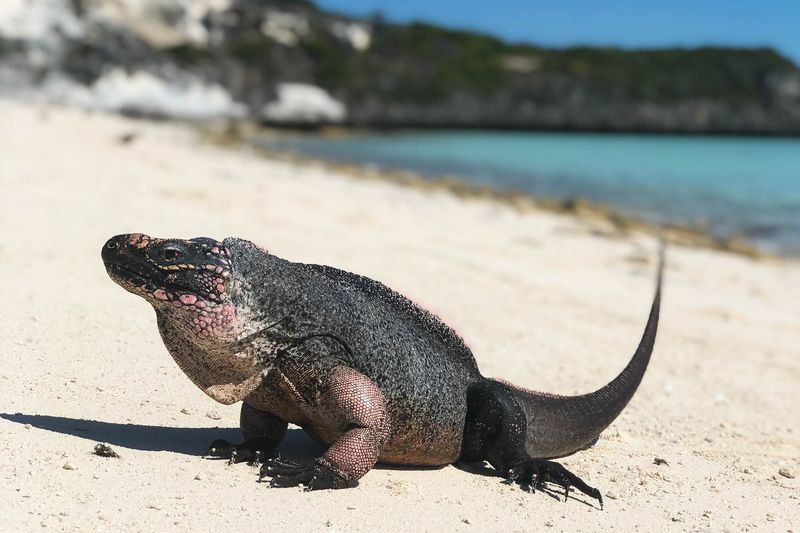
The Bahamas Rock Iguana is an endemic reptile, found only on a few islands in the Bahamas. These iguanas are known for their rugged appearance and distinctive scales. They are primarily herbivorous, feeding on leaves, flowers, and fruits.
Basking in the sun, they regulate their body temperature, a common sight on the rocks and beaches of their habitat. Unfortunately, habitat destruction and invasive species threaten their existence. Conservation programs aim to protect these unique iguanas, as they are an integral part of the Bahamas’ natural heritage.
Spotted Eagle Ray
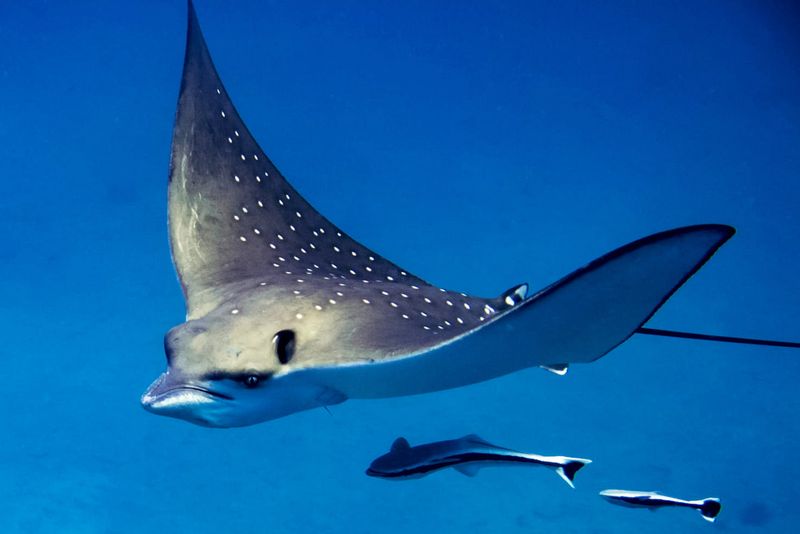
The Spotted Eagle Ray is an elegant and graceful creature, often seen gliding through the Bahamas’ crystal-clear waters. Known for their distinctive spots and long tails, these rays are mesmerizing to watch. They inhabit coral reefs and shallow lagoons, where they feed on mollusks and crustaceans.
These rays have powerful jaws that can crush the shells of their prey. Observing a Spotted Eagle Ray in its natural environment is a memorable experience for divers and snorkelers alike. Protecting their habitat is essential to ensure future generations can enjoy these magnificent animals.
Bahama Parrot
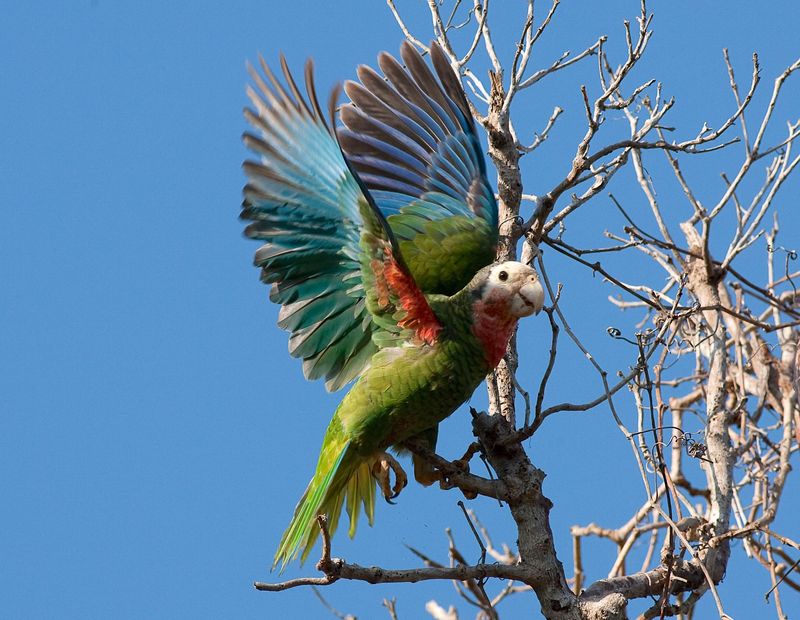
The Bahama Parrot, also known as the Abaco Parrot, is a colorful bird species native to the islands of Abaco and Inagua. These parrots are known for their vibrant plumage and sociable nature. They inhabit pine forests and are often seen foraging in groups.
Their diet consists of seeds, fruits, and nuts. The Bahama Parrot’s ability to mimic sounds is remarkable, adding to their charm. Protecting their habitat is crucial, as they face threats from habitat destruction and hurricanes. Conservation efforts strive to preserve their population for future generations.
Queen Conch
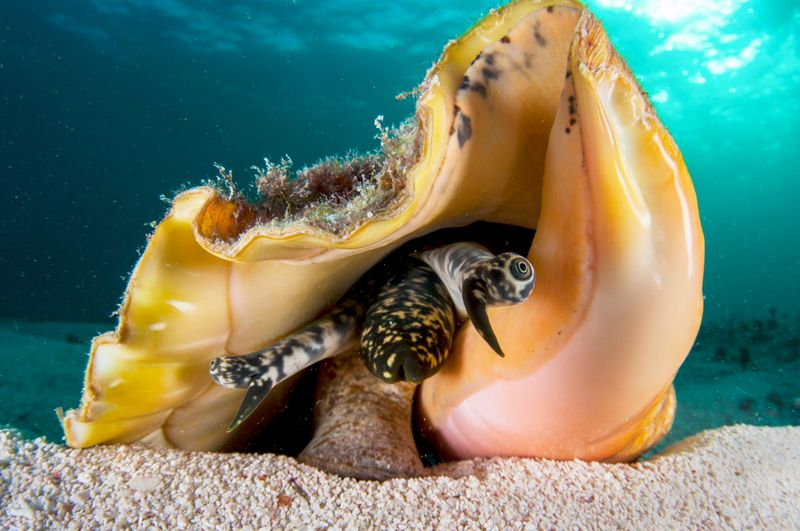
The Queen Conch is a large marine snail renowned for its beautiful spiral shell. These mollusks are an iconic part of the Bahamas’ marine life and are often found in seagrass beds and sandy bottoms. They play a crucial role in the ecosystem by grazing on algae and maintaining the health of seagrass habitats.
Overharvesting has led to a decline in their numbers, and sustainable practices are essential for their conservation. The Queen Conch is not only important for the marine environment but also holds cultural significance in the Bahamas.
Green Sea Turtle
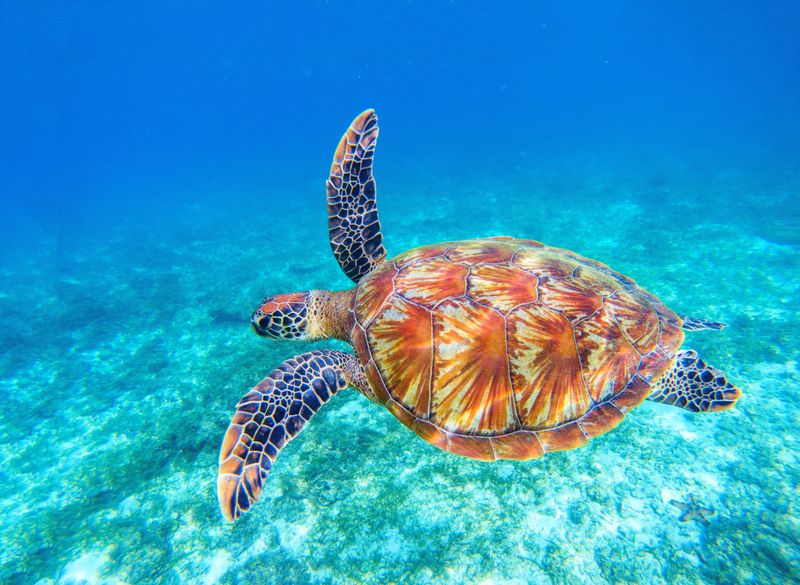
Green Sea Turtles are graceful marine reptiles found in the tropical and subtropical waters of the Bahamas. These turtles are named for the greenish color of their body fat, which results from their herbivorous diet. They primarily feed on seagrass and algae.
Green Sea Turtles are known for their long migrations, traveling thousands of miles between feeding grounds and nesting beaches. Protecting their nesting sites and feeding habitats is vital for their survival. Observing a Green Sea Turtle in its natural habitat is a mesmerizing experience, highlighting the beauty of marine life.
Caribbean Reef Shark
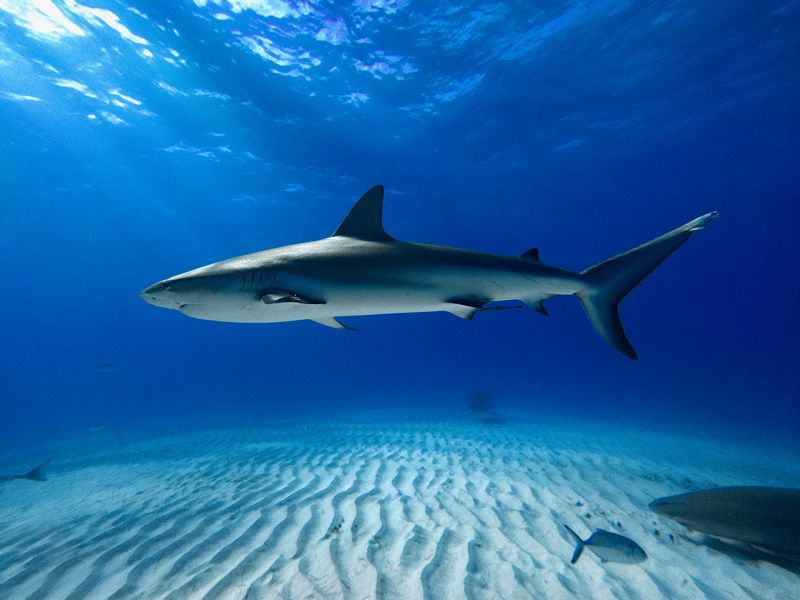
The Caribbean Reef Shark is a powerful predator found in the warm waters of the Bahamas. These sharks are known for their streamlined bodies and impressive agility. They play a vital role in maintaining the balance of marine ecosystems by controlling the populations of prey species.
Caribbean Reef Sharks are often seen by divers exploring the coral reefs, where they patrol the waters with elegance. Although they are predators, these sharks are not typically aggressive towards humans. Efforts to protect shark populations are essential to preserve the health of the oceans.
Bahamian Hutia
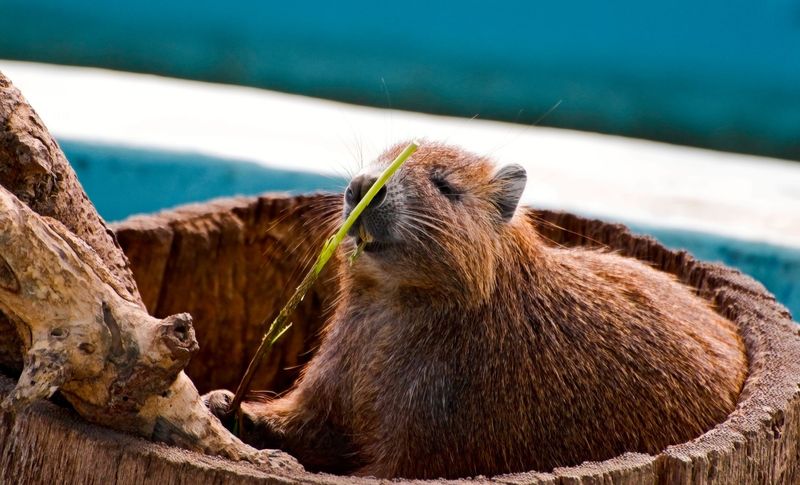
The Bahamian Hutia is a small, nocturnal rodent native to the Bahamas. These furry creatures have a unique appearance with their rounded bodies and long tails. They inhabit forests and shrublands, where they forage for food such as leaves, fruits, and bark.
Once thought to be extinct, the Bahamian Hutia has made a remarkable comeback thanks to conservation efforts. They are now protected on several islands, where they continue to thrive. Observing these elusive animals in their natural habitat is a rare and special experience.
Sperm Whale
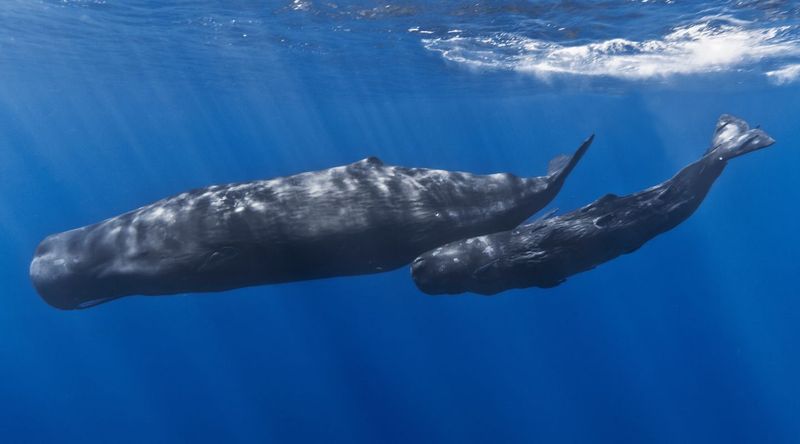
Sperm Whales are the largest toothed predators in the world, and the waters off the Bahamas are one of the best places to see them. These whales are known for their massive heads and deep diving abilities. They can hold their breath for up to 90 minutes, diving to depths of over 3,000 feet.
Sperm Whales have a complex social structure, living in groups called pods. Observing them is a breathtaking sight, as they breach and dive with incredible grace. Protecting their habitats is crucial, as they face threats from ship strikes and noise pollution.
Raccoon Butterflyfish
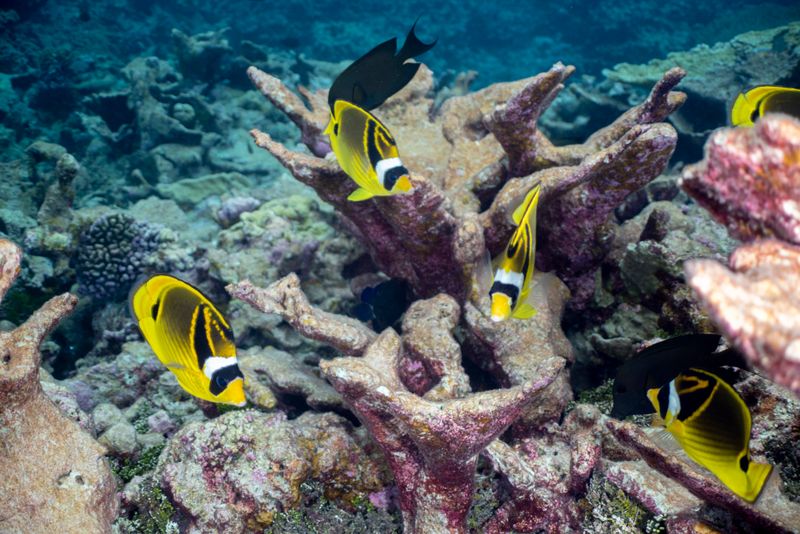
Raccoon Butterflyfish are vibrant and colorful inhabitants of the coral reefs in the Bahamas. These fish are recognized by their striking black and yellow banded patterns, resembling the markings of a raccoon. They are social creatures, often seen swimming in pairs or small groups.
These butterflyfish feed primarily on coral polyps and small invertebrates. Their presence is an indicator of healthy reef ecosystems. For divers and snorkelers, encountering these beautiful fish adds to the allure of exploring the underwater world of the Bahamas. Protecting their habitat is essential for their survival.
Bahamian Boa
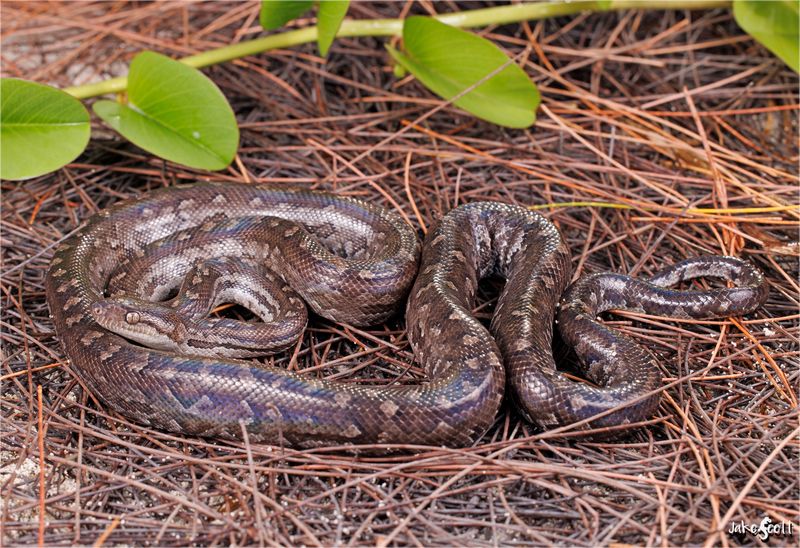
The Bahamian Boa is a non-venomous snake species endemic to the Bahamas. These snakes are known for their impressive length and striking earthy coloration. They inhabit forests and rocky areas, where they hunt for small mammals and birds.
Bahamian Boas play an important role in controlling rodent populations, contributing to the balance of ecosystems. Although they are often misunderstood and feared, these snakes are typically shy and reclusive. Conservation efforts focus on protecting their habitats and educating the public about their ecological importance.
Harlequin Pipefish
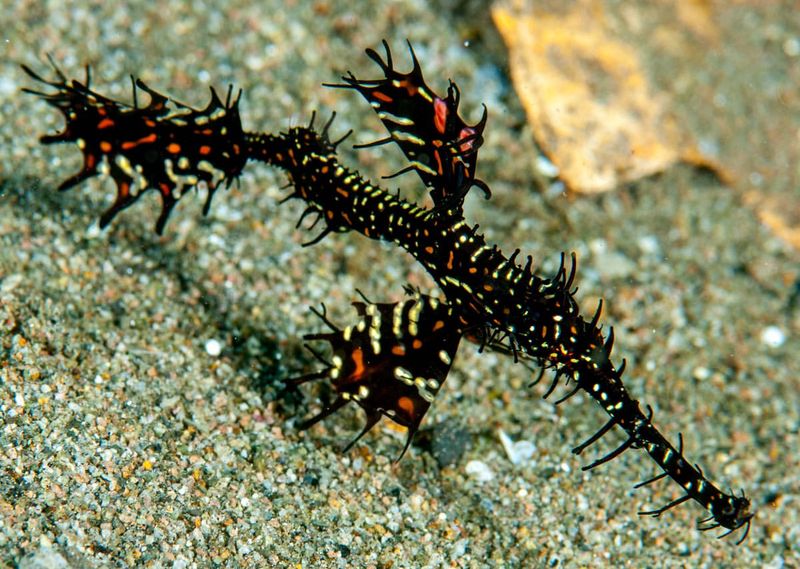
The Harlequin Pipefish is a delicate and beautifully patterned fish found in the shallow waters of the Bahamas. These fish have elongated bodies with colorful patterns, allowing them to blend seamlessly with seagrass and coral.
Harlequin Pipefish are related to seahorses and share similar reproductive behaviors, with males carrying eggs in a brood pouch. They feed on tiny crustaceans and plankton. Observing these fascinating fish requires a keen eye and careful approach, as they are masters of camouflage. Protecting their seagrass habitats is crucial for their conservation.
American Flamingo
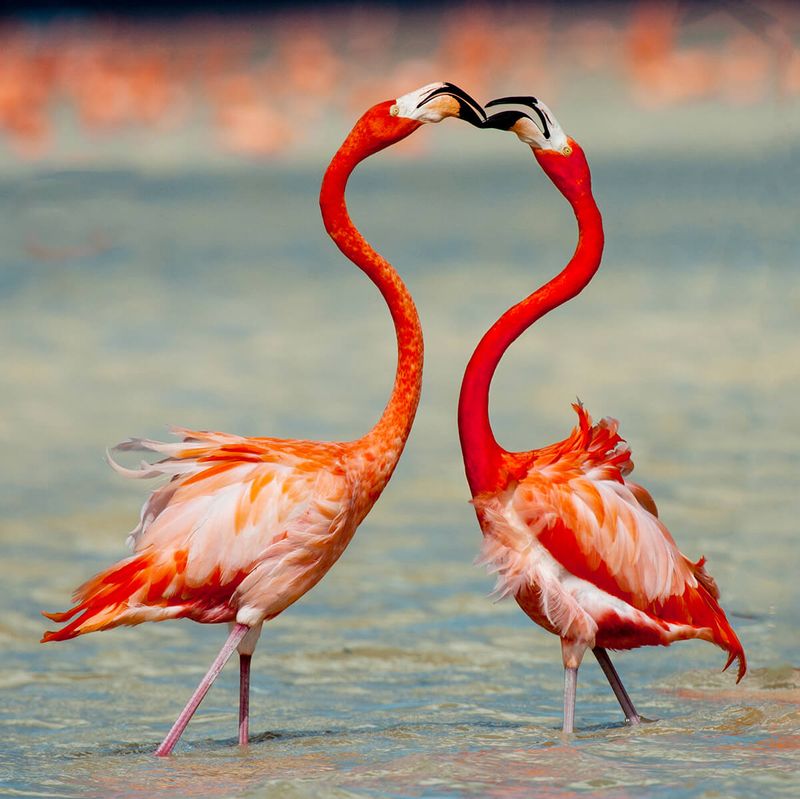
The American Flamingo is another stunning bird species found in the Bahamas, known for its striking pink plumage and elegant presence. These flamingos inhabit lagoons and salt flats, where they feed on brine shrimp and algae.
Their vibrant color is a result of carotenoid pigments in their diet. American Flamingos often gather in large flocks, creating a spectacular sight. They are social birds with complex courtship displays. Protecting their habitats is essential for maintaining their populations, as they are sensitive to environmental changes and human disturbance.
Caribbean Spiny Lobster
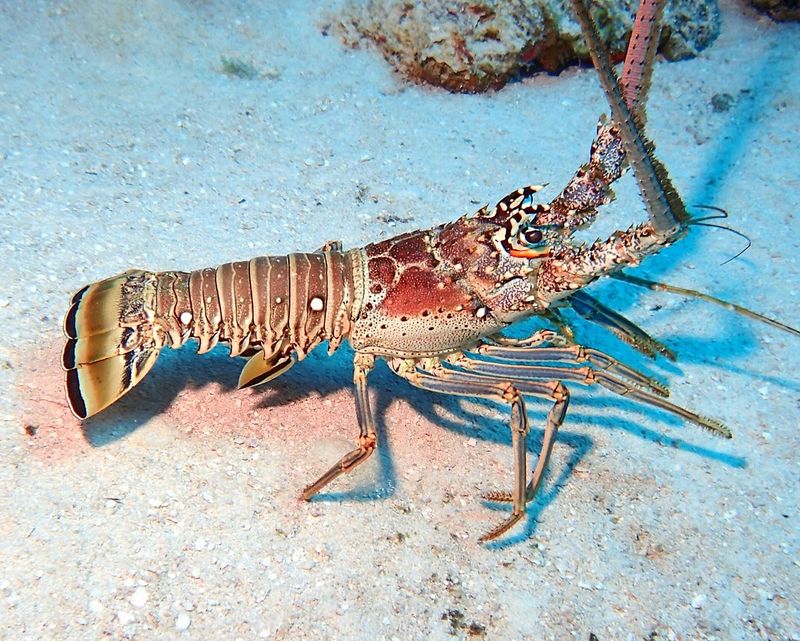
The Caribbean Spiny Lobster is a valued marine species found in the warm waters of the Bahamas. These lobsters are known for their long antennae and spiky exoskeletons. They inhabit coral reefs and rocky areas, where they hide during the day and emerge at night to feed.
Unlike their clawed cousins, spiny lobsters use their antennae for defense. They are a popular target for fishermen, making sustainable management practices vital for their conservation. The Caribbean Spiny Lobster is both ecologically important and economically valuable in the Bahamas.
Bahama Woodstar
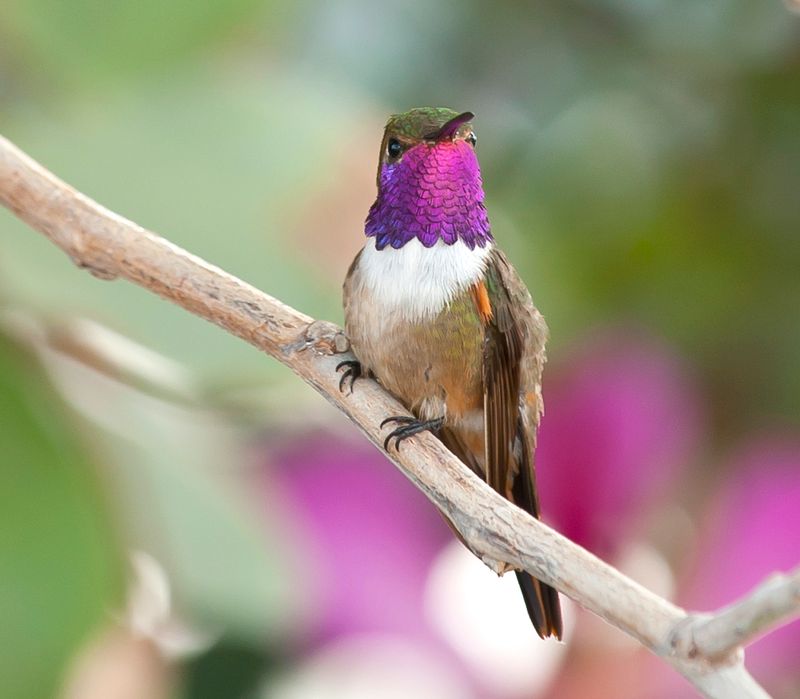
The Bahama Woodstar is a tiny hummingbird species endemic to the Bahamas. Known for their iridescent feathers and rapid wing beats, these birds are a delight to watch. They feed on nectar from a variety of flowers, playing a crucial role in pollination.
Bahama Woodstars are often seen flitting among gardens and forests, their presence marked by a characteristic humming sound. Protecting their habitat and food sources is crucial for their survival, as they are sensitive to environmental changes. These charming birds add a touch of magic to the Bahamian landscape.
Nurse Shark
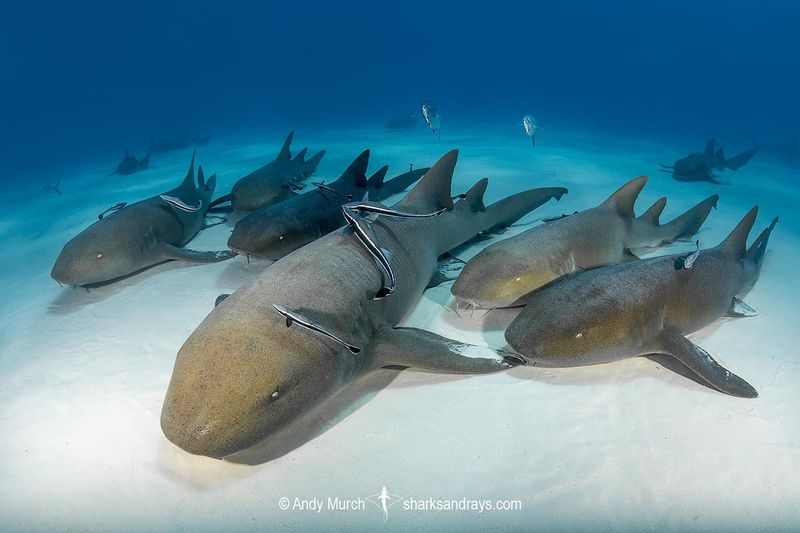
Nurse Sharks are gentle bottom-dwellers found in the warm waters of the Bahamas. These sharks are known for their flattened heads and barbels, which they use to sense prey hiding in the sand. Nurse Sharks feed primarily on crustaceans and small fish.
Despite their intimidating appearance, Nurse Sharks are typically docile and pose little threat to humans. They are often seen resting on the seabed during the day, making them a popular attraction for divers and snorkelers. Protecting their habitats ensures that these peaceful sharks continue to thrive in the Bahamas.
Great Lizard Cuckoo
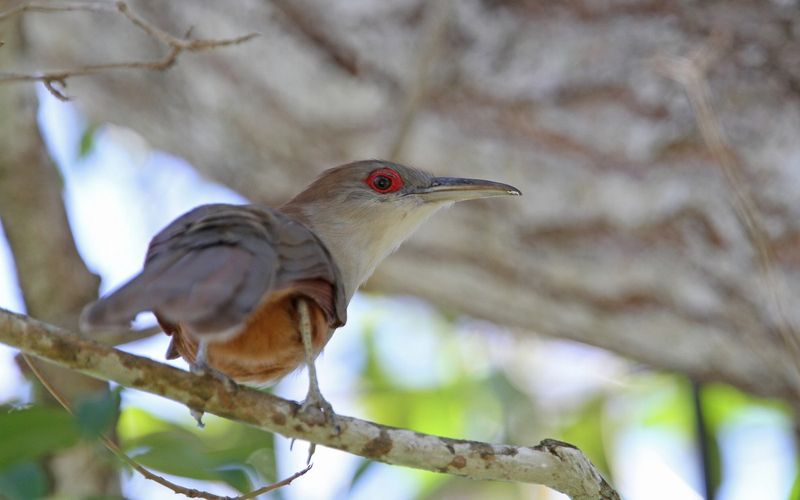
The Great Lizard Cuckoo is a unique bird species found in the forests of the Bahamas. Known for their long tails and distinctive brown plumage, these birds are adept hunters, preying on lizards and large insects.
They are often heard before they are seen, with their loud and distinctive calls echoing through the trees. Great Lizard Cuckoos are important for controlling insect populations, contributing to the balance of forest ecosystems. Observing these elusive birds is a treat for birdwatchers exploring the Bahamian wilderness.
Bahama Yellowthroat
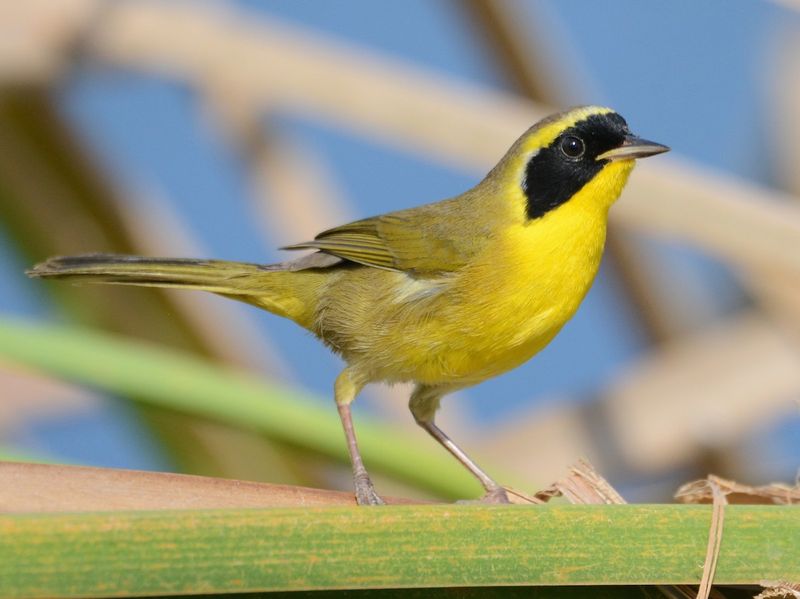
The Bahama Yellowthroat is a small, colorful warbler species endemic to the Bahamas. These birds are recognized by their bright yellow throats and olive-brown plumage. They inhabit dense shrubs and wetlands, where they forage for insects and seeds.
Bahama Yellowthroats are known for their melodic songs, adding a delightful soundtrack to the natural surroundings. Protecting their habitat is crucial, as they face threats from habitat loss and environmental changes. These charming birds are a symbol of the Bahamas’ rich biodiversity and natural beauty.
Cuban Parrot
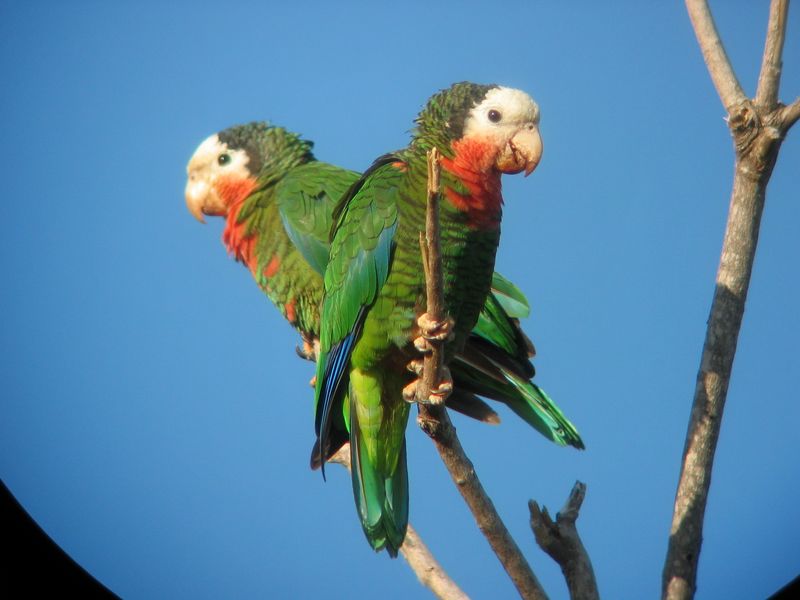
The Cuban Parrot, also known as the Rose-throated Parrot, is a striking bird species found in the Bahamas. These parrots are known for their vibrant green plumage and distinctive red throat patches. They inhabit subtropical forests and woodlands, where they forage for seeds and fruits.
Cuban Parrots are highly social and intelligent, often seen in flocks. Protecting their habitats is crucial, as they face threats from habitat destruction and illegal pet trade. Observing these lively parrots in the wild is a captivating experience, showcasing the diversity of the Bahamian avian world.
Royal Tern
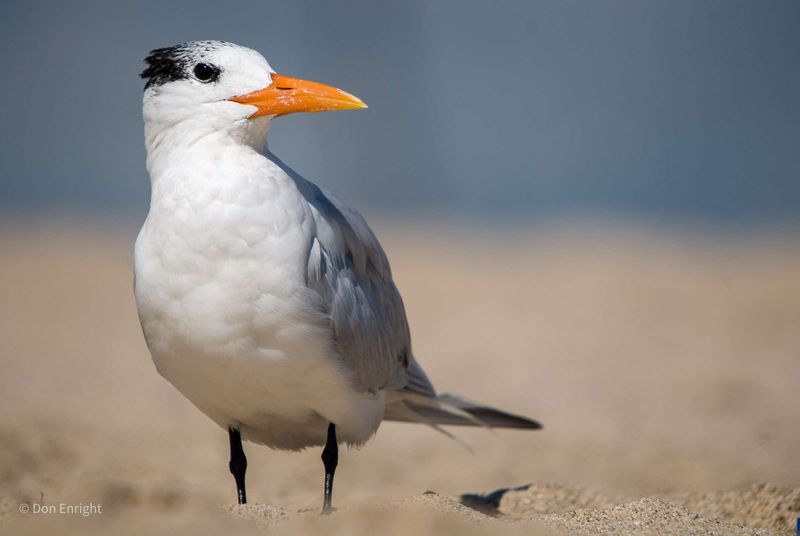
The Royal Tern is a striking seabird found along the coastlines of the Bahamas. Known for their distinctive black caps and orange bills, these terns are elegant fliers. They dive into the ocean to catch fish, their primary food source.
Royal Terns are often seen in large flocks, roosting on sandy beaches and islands. Their acrobatic flight and graceful dives are a joy to watch. Protecting their nesting sites is vital, as they are vulnerable to disturbances from human activity. These seabirds are an integral part of the coastal ecosystem.
White-tailed Tropicbird
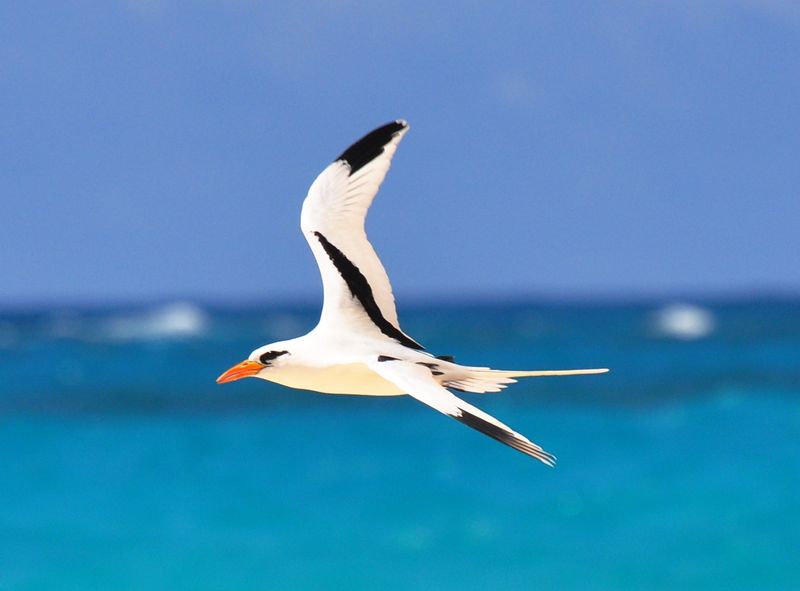
The White-tailed Tropicbird is a graceful seabird renowned for its long tail feathers and striking appearance. These birds are often seen soaring above the ocean, using their keen eyesight to spot fish below.
Their distinctive black eye masks and elegant flight make them a favorite among birdwatchers. White-tailed Tropicbirds nest on remote cliffs and islands, where they are safe from predators. Protecting these nesting sites is crucial for their survival, as they are sensitive to human disturbances. Observing these stunning birds in flight is a highlight of any trip to the Bahamas.
Yellowfin Grouper
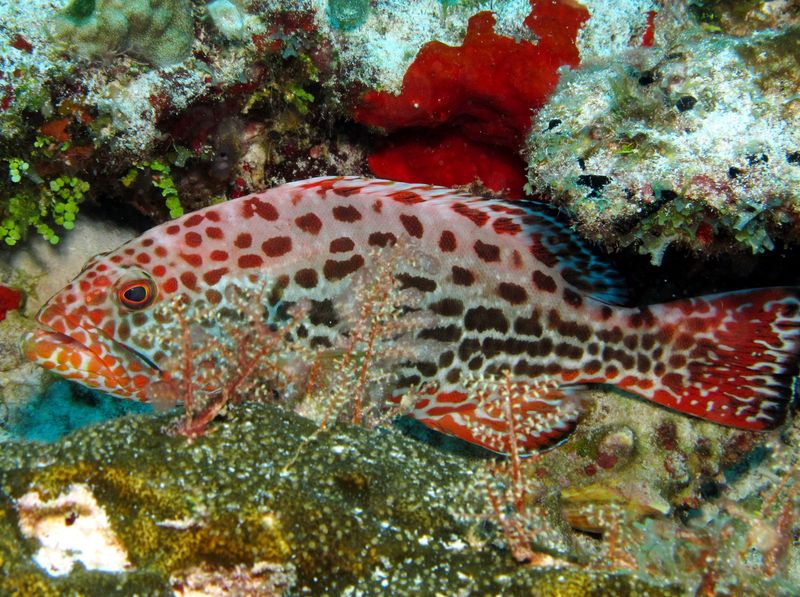
The Yellowfin Grouper is a vibrant fish species found in the coral reefs of the Bahamas. These groupers are recognized by their bright yellow fins and speckled body patterns. They are predators, feeding on small fish and invertebrates that inhabit the reefs.
Yellowfin Groupers play a crucial role in maintaining the health of coral ecosystems. They are a popular target for recreational fishing, making sustainable practices essential for their conservation. Observing these colorful fish in their natural habitat is a rewarding experience for divers exploring the underwater wonders of the Bahamas.
West Indian Manatee
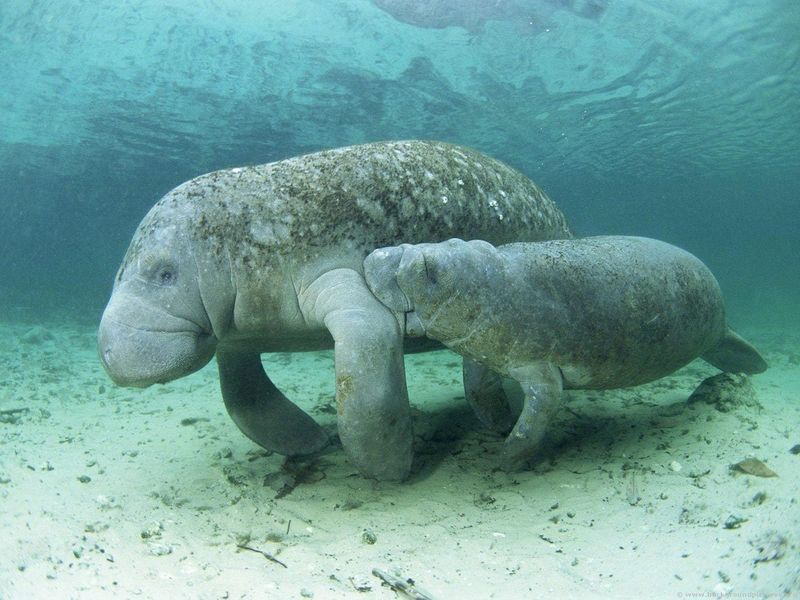
The West Indian Manatee, also known as the sea cow, is a gentle marine mammal found in the warm waters of the Bahamas. These large, slow-moving creatures are known for their rounded bodies and paddle-shaped tails. They inhabit mangroves and seagrass beds, where they graze on aquatic vegetation.
Manatees are often seen resting near the surface, making them easy to spot. Protecting their habitats is crucial, as they are vulnerable to boat strikes and habitat degradation. Observing these gentle giants in their natural environment is a peaceful and awe-inspiring experience.
Blue Marlin
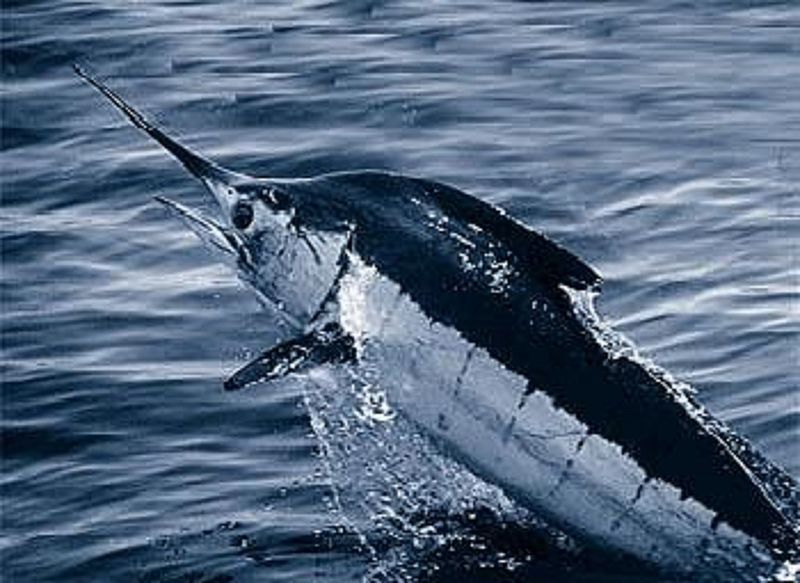
The Blue Marlin is a formidable game fish found in the deep waters of the Bahamas. Known for their sharp bills and striking blue coloration, these fish are prized by anglers for their strength and agility. They are capable of incredible bursts of speed, making them challenging to catch.
Blue Marlins are apex predators, feeding on smaller fish and squid. Protecting their populations is essential, as overfishing poses a significant threat. For those fortunate enough to witness a Blue Marlin in action, the sight is unforgettable, embodying the wild spirit of the Bahamian oceans.

